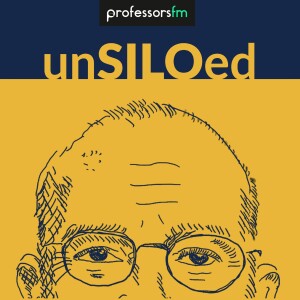
311. What Exactly is Violence? feat. David Alan Sklansky
 2023-07-28
2023-07-28
The importance of the division between violent and non-violent crimes seems to have existed for as long as we’ve had laws, but in reality, its legal salience is much more recent. So what happened in the 1960s, ’70s, and ’80s that led to the increase in punishment for crimes designated as violent? And what effects has it had?
David Alan Sklansky is a professor at Stanford Law School and also an author. His latest book, from earlier this year, is titled A Pattern of Violence: How the Law Classifies Crimes and What It Means for Justice.
David and Greg discuss what changes the division of punishments of crimes has gone through over the years, what makes a crime violent or non-violent, and how those labels can be misleading or have shifted over time. They talk about how the stand-your-ground laws have grown in popularity, taking over from the former philosophy of duty to retreat. David discusses how violent acts are looked at differently, whether they are committed by citizens vs. officers of the law, and what that can say about a society.
*unSILOed Podcast is produced by University FM.*
Episode Quotes:The perils of distinguishing serious violence
54:37: It may seem like that's not a big deal to talk about serious violence rather than violence. But I think it is because the thing about the language of serious violence is it wears its ambiguity, its subjectivity, or its vagueness on its sleeve. Nobody imagines that the line between serious and non-serious violence is clear and sharp. The very language makes it obvious that we're going to have to draw a distinction. We don't know exactly where the line is, but when we talk about violent versus nonviolent offenses, it's easy, it's natural, and it's common to think that there's a sharp line here and that anybody who's convicted of a violent offense is obviously and categorically worse, and that has huge consequence.
The law draws on popular ideas about violence
12:34: The law draws on popular ideas about violence, but the law also clearly reinforces those ideas by treating violence as a formal category and a category that has clear boundaries.
Recognizing the gravity of violent policing
04:18: There are other areas where we don't pay enough attention to the distinction between violence and nonviolent conduct, and the most important of those has to do with policing, where the law and rules that have developed for police misconduct don't treat violent police misconduct as categorically worse or really as even different than nonviolent police misconduct. And I think that's a mistake.
Is violence a result of someone’s deep-seated character?
17:49: Violence was thought to be the kind of thing that often happened explosively. I think over the last several decades, the way in which the law has thought about violence has shifted, and it's become much more common in many, but not all contexts to think about violence as something that is the result of somebody's deep-seated character and not the result of the circumstances in which they find themselves.
Show Links:Recommended Resources:- Jeremy Bentham
- Faculty Profile at Stanford Law School
- Professional Profile on American Law Institute
- Contributor’s Profile on Inquest
- David Alan Sklansky on Twitter
- A Pattern of Violence: How the Law Classifies Crimes and What It Means for Justice
- Evidence: Cases, Commentary, and Problems (Aspen Casebook)
- Google Scholar Page
More Episodes
Create your
podcast in
minutes
- Full-featured podcast site
- Unlimited storage and bandwidth
- Comprehensive podcast stats
- Distribute to Apple Podcasts, Spotify, and more
- Make money with your podcast
It is Free
- Privacy Policy
- Cookie Policy
- Terms of Use
- Consent Preferences
- Copyright © 2015-2024 Podbean.com






